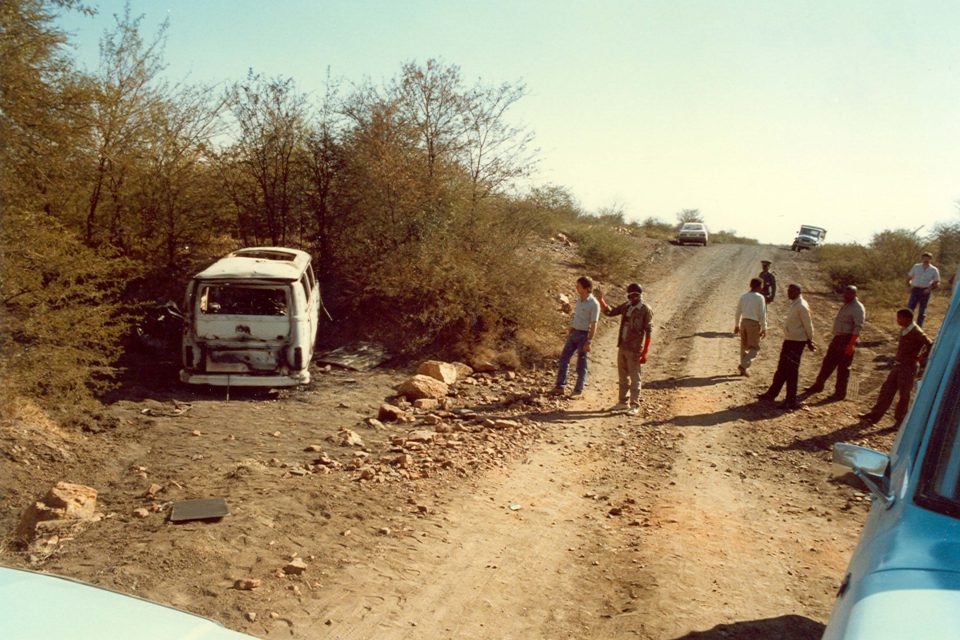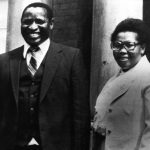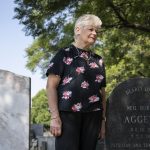New tech helps find last of the Mamelodi 10
In 1986, apartheid security forces attempted to obliterate the identities of 10 teenagers they had murdered. But for dogged detective work and advancing technology, they could have succeeded.
Author:
6 February 2020

Ten coffins carrying nine bodies lined the front of the auditorium in Solomon Mahlangu Freedom Square in Mamelodi, Tshwane. On each coffin stood a framed black and white photograph, a portrait of a young man.
The photographs, faded by the years, were of Stephen Makena, Jeremiah Magagula, Morris Nkabinde, Jeremiah Ntuli, Rooibaard Geldenhuys, Samuel Masilela, Thomas Phiri, Elliot Sathege, Abraham Makubane and Sipho Sibanyoni. The eldest was 19, the youngest just 14.
The funeral was a homecoming for these teenagers, who had disappeared from Mamelodi 22 years earlier.
That afternoon in October 2008, a guard of honour made up of Umkhonto weSizwe veterans escorted the coffins to the Mamelodi West cemetery where, one by one, they were laid in the ground. Watching was Madeleine Fullard, the head of the National Prosecuting Authority’s Missing Persons Task Team, which had found the remains.
The coffins were placed side by side in a single, long grave. But one casket didn’t go into the ground. It was empty, a symbolic stand-in for the missing teen whose body still lay somewhere in the Winterveld cemetery north of Tshwane. But a space was left alongside the other nine coffins in the grave. This was where the final member of the Mamelodi 10 was to be buried, if found.
“He might be found next week, it might be next year,” said Fullard at the time.
Dogged detective work
The search would take much longer than that. The Missing Persons Task Team had to battle a cemetery that refused to give up its missing dead and ahead of the team lay more than a decade of dogged detective work.
In the early days, the Winterveld cemetery had been forgiving. Between 2005 and 2006, the task team located and exhumed nine of the Mamelodi 10. Each of them was found in a pauper’s grave but because their remains were so badly burnt, it was impossible to identify them individually through DNA.
“This is a very difficult cemetery, just because there are no records,” says Claudia Bisso, an Argentinian member of the team who has worked around the world, finding and exhuming bodies killed in conflicts. Success would depend on finding a way to map the cemetery.
Among unmarked burial mounds and the odd tombstone hidden in the tall grass, the team were looking for the section of cemetery that held graves from 1986.
Related article:
It was in that year on the night of 26 June that a bespectacled 33-year-old man arrived in a minibus to pick up a group of 10 youths in Mamelodi. His name was Joe Mamasela. He was an undercover police officer for the apartheid regime and behind the bookish glasses, a ruthless killer.
This time, however, Mamasela would not be doing the killing. His job was to sweet talk the teenagers into believing they were to be smuggled out of South Africa into Botswana. This operation involved the North Transvaal Security Branch and the South African Defence Force (SADF) in a plan to target and kill activists before they left the country for guerilla training.
Staged accident
Mamasela drove them into what was then the homeland of Bophuthatswana. Then, at a prearranged spot, the minibus came to a halt and was quickly surrounded by balaclava-clad SADF special forces soldiers. The teenagers were instructed to get out of the vehicle and injected with a drug that knocked them out before they were placed back in the minibus.
An accident was staged and the vehicle set alight. The bodies were found the following day.
A paper trail would reveal that they were sent to two mortuaries before disappearing, one by one, into unmarked pauper graves in the Winterveld cemetery. In the years to follow, numerous attempts were made to find the men.
“The mothers of the Mamelodi 10 themselves organised some excavations at some point,” says Fullard. They asked the Missing Persons Task Team, which had been mandated to find apartheid’s disappeared, to bring their sons home.

Flags and posies
Early in the search, Fullard located the police crime-scene photographs of the wrecked minibus and the charred corpses inside. The gruesome photographs would provide important leads.
“It helped us a lot to understand the condition of the bodies, of the degree of burning,” she explains, as she and her colleagues realised that few of the bodies in the cemetery would have been burnt to such a degree.
The team had attempted earlier on to map the cemetery. But how those graves were laid out mostly eluded them. “I was convinced there was method to this madness,” recalls Fullard.
At one point, Bisso marked some of the graves with little yellow flags she had collected while working in Sudan. “When we got back to the cemetery, we found people had taken the flags and made little posies from them and put them on graves,” laughs Fullard.

Tech solution
After nine of the Mamelodi 10 were buried, the years rolled by. While other cases took priority, task team members would revisit the cemetery periodically in the hope that their search would eventually reveal number 10.
Graves were opened, but the remains they found didn’t match the burn patterns of the nine. But then new technology gave Bisso an idea. “Drone technology came along and Claudia suggested that we try doing high-resolution aerial photography of the cemetery,” says Fullard.
On a clear and sunny morning, Fullard and a couple of members of the Missing Persons Task Team watched as a drone flew a pre-programmed circuit high above the cemetery. Watching on a monitor, they could already see the telltale rounded mounds of earth that were invisible from where they stood.
The team used the high-definition aerial photographs to create a map of the cemetery. They showed it to the mothers of the Mamelodi 10 and it brought renewed hope that the final missing son would be brought home soon.
“With this map, we could zoom into particular strips we were interested in and we could exclude areas where we had dug before,” says Fullard.
Graves were identified and opened up. By the time task team investigator Billy Motsileng arrived at the Winterveld cemetery on the morning of 31 October 2019, 250 graves had already been examined and gravediggers had opened up a new set the day before.
Mortuary tag
The focus of the search was for three freedom fighters who disappeared a year after the Mamelodi 10. “We basically had given up on the last of the Mamelodi 10. We were pretty sure that someone had accidentally put a tombstone on his grave,” says Fullard.
Motsileng jumped into grave 54 and the blackened soil immediately caught his eye. He called Bisso over to take a look. Among the bones were other fragments. “There were pieces of glass,” recalls Motsileng.
The graves of the other members of the Mamelodi 10 had contained glass, the shattered remnants of the minibus’ windscreen and windows. There were pieces of burnt car upholstery but also something else, a piece of evidence that would finally unite the body in grave 54 with his comrades.
It was a green plastic tag the team had only ever seen in their exhumations of the other nine Mamelodi 10 members, a tag said to have come from a mortuary. They had found their man.
Related article:
Bisso phoned Fullard. “And Claudia said to me I can retire now, because this was the first case she and I had worked together, back when we were young.”
Nine of the 10 mothers watched as Bisso officially exhumed the body on 19 December. Maggie Nkabinde, Morris Nkabinde’s mother, had gone to a clinic that morning as she was not feeling well. That evening, she was dead. She didn’t see the exhumation of the body that could have been her son.
In a couple of months’ time, the last member of the Mamelodi 10 will take his place alongside his comrades in the Mamelodi West cemetery.
In the meanwhile, the task team will continue to coax the Winterveld cemetery north of Tshwane to give up its dead. “We are already on grave 76. Since the map, we just carry on,” says Bisso.


